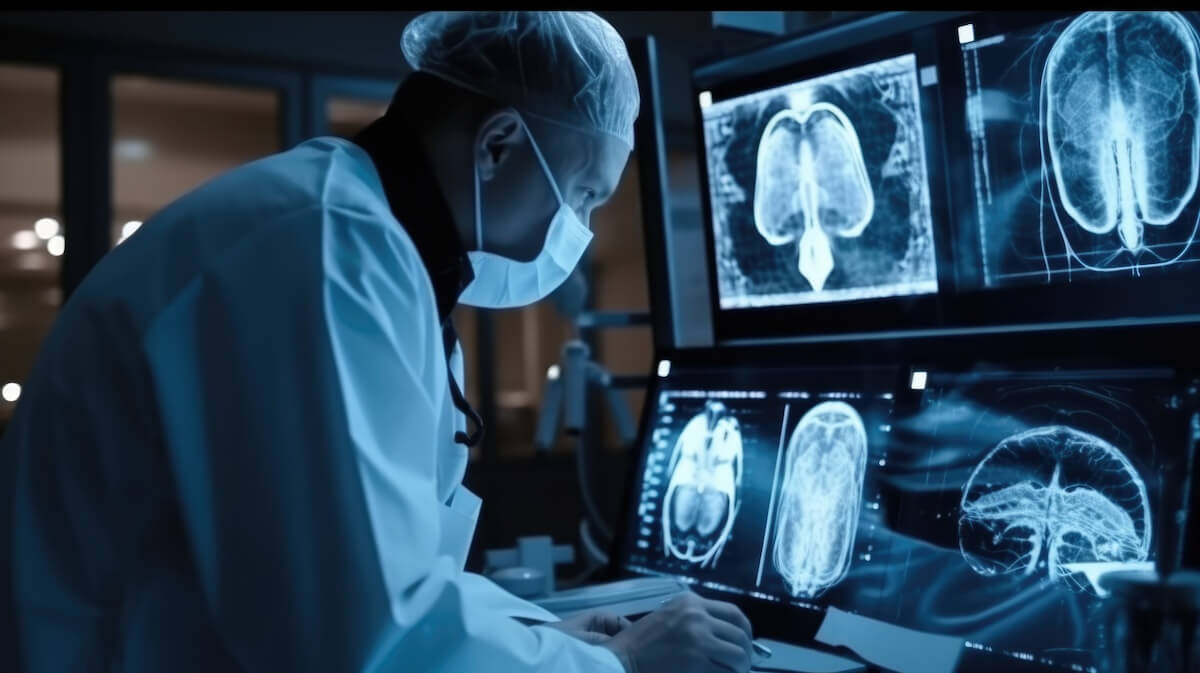Radiology Second Opinion Doctor vs. General Radiologist
When you receive a radiology report — whether it’s from an MRI, CT scan, or X-ray — it can feel like reading a foreign language. You might trust the results, but you also might wonder: Is this accurate? Did they miss anything? Should I double-check before moving forward with treatment?
This is where consulting a Radiology Second Opinion Doctor can make all the difference. While both general radiologists and radiology second opinion doctors are experts in imaging, their roles, approach, and purpose are not the same.
Understanding these differences can help you make an informed decision that could impact your diagnosis, treatment plan, and peace of mind.
What Is a General Radiologist?
A general radiologist is a medical doctor trained to interpret medical images, such as X-rays, MRIs, CT scans, mammograms, and ultrasounds.
They are often the first specialist who examines your scans after a test and provides a report to your referring physician.
Key roles of a general radiologist:
- Interpret images ordered by your primary doctor or specialist
- Identify injuries, tumors, infections, and abnormalities
- Communicate findings through formal radiology reports
- Work in hospitals, imaging centers, and clinics
While highly skilled, general radiologists often work under time pressure, interpreting many images each day. This workload can sometimes mean less time for detailed explanations to patients or for considering alternative interpretations.
What Is a Radiology Second Opinion Doctor?
A Radiology Second Opinion Doctor is a radiologist who reviews your existing scans and reports independently — with the sole goal of providing a fresh, thorough, and unbiased perspective.
They do not replace your original radiologist but act as a safeguard against misinterpretation, oversight, or incomplete reporting.
What sets them apart:
- They focus entirely on reviewing existing scans and reports, not just new tests
- They often have sub-specialty expertise (e.g., neuroradiology, musculoskeletal imaging, breast imaging)
- They spend more time studying each case in depth
- They communicate findings directly to you or your doctor, often with clearer explanations
This is especially valuable in complex, rare, or borderline cases — or when treatment decisions carry significant risks.
Key Differences Between a General Radiologist and a Radiology Second Opinion Doctor
| Aspect | General Radiologist | Radiology Second Opinion Doctor |
|---|---|---|
| Primary Role | First interpretation of new scans | Independent re-evaluation of existing scans |
| Focus | Broad range of imaging cases | Detailed review, often with sub-specialty focus |
| Workload | High volume, time-limited | Fewer cases, more time per case |
| Patient Interaction | Usually indirect (via referring doctor) | May directly explain findings to patient |
| Purpose | Identify and report findings | Confirm accuracy, spot missed details, suggest further steps |
| Value in Complex Cases | Limited due to time and scope | High — brings specialized insight and second validation |
When Should You Seek a Radiology Second Opinion Doctor?
Here are common scenarios where a second opinion in radiology is strongly recommended:
- Unclear or confusing report language — if you can’t understand what the findings mean for your health.
- Rare or complex conditions — such as brain tumors, rare cancers, or unusual fractures.
- Conflicting medical opinions — when your doctor and surgeon interpret your imaging differently.
- Before surgery or major treatment — to ensure the diagnosis justifies the procedure.
- Persistent symptoms despite a “normal” scan — to double-check if something was overlooked.
Benefits of Choosing a Radiology Second Opinion Doctor
Choosing a second opinion specialist isn’t about mistrust — it’s about empowerment.
- Accuracy – Reduces the chance of errors or missed findings.
- Clarity – Provides detailed, plain-language explanations of results.
- Confidence – Helps you feel secure in your treatment plan.
- Alternative Options – May reveal different interpretations that affect your next steps.
This process can be life-changing, especially if the new findings alter your diagnosis or treatment pathway.
Why Not Just Ask the Same Radiologist Again?
It’s natural to think, “Why not have my original radiologist take another look?”
The problem is, they already have a set interpretation. A fresh set of eyes from a different doctor ensures there’s no cognitive bias or mental shortcut from prior readings.
Just as writers benefit from editors, radiology benefits from a truly independent review.
Myths About Radiology Second Opinions
Myth 1: “It means I don’t trust my doctor.”
Reality: Good doctors welcome second opinions — it’s part of quality care.
Myth 2: “It will delay my treatment.”
Reality: Most second opinions can be completed in days, and the short wait can prevent costly mistakes.
Myth 3: “It’s only for serious illnesses.”
Reality: Even seemingly small findings can be reinterpreted in ways that change treatment.
The Role of Online Radiology Second Opinions
Today, distance is no longer a barrier. Through expert radiology consultations online, you can upload your scans, have them reviewed by a top sub-specialist, and receive a clear written report — without stepping out of your home.
This is especially helpful for patients in remote areas, or those seeking niche expertise that isn’t available locally.
Final Thoughts: Choosing Clarity Over Assumption
When your health is on the line, one opinion is good — but two opinions are better. A Radiology Second Opinion Doctor offers an extra layer of safety, insight, and reassurance that can shape your treatment decisions for the better.
If you’ve recently received imaging results and want the confidence of knowing every angle has been considered, don’t leave it to chance — contact our specialists today and get the clarity you deserve.













